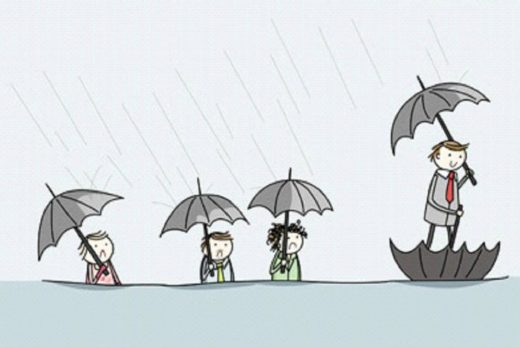Growth creates a need for structure and discipline, organization changes which can strain the culture of creativity that is so vital to future success. To sustain competitive advantage, companies need to institutionalize the innovation process; they need to create an internal environment where creative thinking is central to their values, assumptions and actions. Innovation is the engine of growth. It is also a mindset – meaning it is influenced by beliefs, values, and behavior. Company culture therefore has a huge influence on innovation, being able to either facilitate it or restrain it. Realizing this, many companies have attempted to put systems and processes into place that encourage an innovation culture. However, while such measures are often viewed as the panacea, they are really just the beginning. To shape a truly innovation culture, the top people in a company need to develop a mindful approach where their every action and word Continue reading
Organizational Development
Role of Organizational Climate in Facilitating Innovation
One of the most important roles that the leaders play within organization settings is to create the climate for innovation. Organizational climate is a key factor in innovation implementation. Building up an innovative culture in an organisation is one of the important tasks of an innovative leadership. At the same time, creative organizational climate is one of fundamental elements that leads to success of innovation. Doing so successfully will certainly further secure and strengthen the leadership, which initiates innovative climate in the first place. This success will also bind more followers to the leadership because of its respective contributions for innovation, or in another word future success. A leadership should have a quality and skills to manoeuvre the internal environment of an organisation to create a favorable climate for innovation. Although there is no direct influence between organizational climate and innovation, a favorable climate can naturally drive people to seek Continue reading
Survey Feedback as an Organizational Development Tool
The study of Survey Feedback played an important role in formation and history of Organizational Development (OD). Developed as an organization wide intervention by Mann and his associates (1957-1965), survey feedback is a process in which organizational members complete questionnaires on various organizational issues, receive feedback on the results, then take appropriate actions to address the critical needs and concerns. Though some type of survey method was prevalent in various organizations earlier, Institute for Social Research (ISR) of University of Michigan, USA developed a comprehensive questionnaire for conducting survey in different aspects of an organization. The basic objectives of survey feedback method are as follows: To assist the organization in diagnosing its problems and developing action plan for problem-solving. To assist the group members to improve the relationships through discussion of common problems. Process of Survey Feedback Survey feedback method usually proceeds with sequential activities involving data collection, feedback of Continue reading
Levels of Organizational Change Programs
The various levels of organizational change programs may be classified into individual level changes, group level changes and organisational level changes. Individual Level Change Programs Individual level changes may take place due to changes in job assignment, transfer of an employee to a different location or the changes in the maturity level of a person which occurs over a passage of time. The general opinion is that change at the individual level will not have significant implications for the organisation. But this is not correct because individual level changes will have impact on the group which in turn will influence the whole organisation. Therefore, a manager should never treat the employees in isolation but he must understand that the individual level change will have repercussions beyond the individual. Group Level Change Programs Management must consider group factors while implementing any change, because most of the organisational changes have their major Continue reading
Sources of Resistance to Change
The goal of planned organizational change is to find new or improved ways of using resources and capabilities in order to increase an organization’s ability to create value and improve returns to its stakeholders. An organization in decline may need to restructure its resources to improve its fit with the environment. At the same time even a thriving organization may need to change the way it uses its resources so that it can develop new products or find new markets for its existing products. In the last decade, over half of all Fortune 500 companies have undergone major organizational changes to allow them to increase their ability to create value. One of the most well-documented findings from studies have revealed that organizations and their members often resist change. In a sense, this is positive. It provides a degree of stability and predictability to behavior. If there weren’t some resistance, organizational Continue reading
Organizational Change
The concept of organizational change is in regard to organization-wide change, as opposed to smaller changes such as hiring a new person, modifying a program, buying a new computer for the department etc. Examples of organization-wide change are a change in mission statement, restructuring operations (e.g., restructuring to self-managed teams, layoffs, etc.), new technologies, mergers, major collaborations, “rightsizing”, new programs such as Total Quality Management, Business Process Re-engineering, etc. Some experts refer to such change as “organizational transformation”. Organizational change means that there is a fundamental and radical reorientation in the way the organization operates. What are the forces, which necessitate change? Change should not be done for the sake of change — it is a strategy to accomplish the overall goal. Usually organizational change is provoked by some major outside driving force, e.g., substantial cuts in funding, address major new markets/clients, need for dramatic increases in productivity/services, etc. It Continue reading



